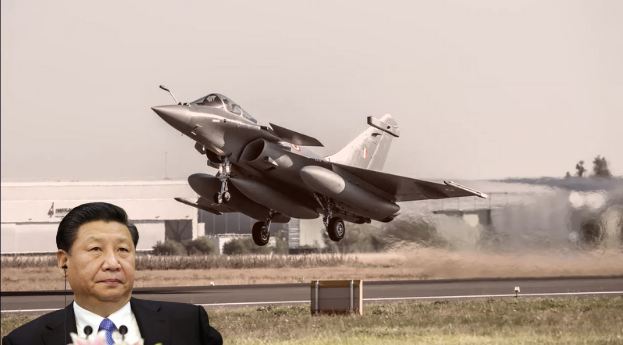Strengthening India’s war-preparation capabilities, India has started deploying its second squadron of 4.5th generation Rafale jets in the strategically crucial eastern base of Hasimara in West Bengal. The name of the squadron is 101 Falcons of Chamb and Akhnoor. Recently, the seventh batch of three more Rafale fighter jets arrived in India after flying non-stop for a distance of almost 8,000 km from France. All three jets will be directly inducted at the Hasimara Base.
The Hasimara air base is situated on the strategic Siliguri corridor that connects India’s Northeast with the rest of the country. It is also the closest air base to the Chumbi Valley, the tr-junction of India, Bhutan and China. The was established with Toofani aircraft after the 1962 war with China. The Hasimara air base also named Wing 16 or the ‘Lethal 16’ was established with Toofani aircraft after the 1962 war with China.
The squadron had not been active after the retirement of the MiG-21 in 2011. In air force parlance, the temporary closing of a squadron is ‘number plating’. However, with the Chicken’s Neck of India under constant threat from the Chinese, terrorists and insurgents alike, the activation of the base is expected to give a booster shot of confidence to the forces.
It is pertinent to note that the first Rafale squadron named ‘Golden Arrows’ is based in the Ambala air force station. A squadron comprises around 18 aircraft. With a combat range of 780 km to 1,650 km depending on the mission, the Rafales come armed with a deadly weapons package, advanced avionics, radars and electronic warfare systems to prevent jamming by adversaries and ensure superior survivability in hostile contested airspace.
On the eastern front, as reported by TFI, India has already deployed Sukhoi-30MKIs at Assam’s Tezpur and Chabua. Along with the Rafale squadron, India has created a potent attack, if and when the Chinese attempt any misadventure.
Read More: More warships and more troops: China faces a very aggressive India on the Indo-Tibetan border
The Indian government recently moved 50,000 troops to the Indo-Tibet borders. India now has roughly 200,000 troops focused on the border, which is an increase of more than 40 per cent from last year. The number of troops has also been increased along the southern Tibetan plateau, with soldiers equipped with machine guns having joined the retinue of armed paramilitary personnel already stationed there.
Reported by TFI, after Prime Minister Narendra Modi wished his holiness Dalai Lama by tweeting a birthday message, the Chinese had been riled up. Such was the anxiety within the CCP Politburo that President Xi Jinping hurriedly scampered to the Tibet Autonomous Region (TAR) on a surprise visit to soothe the jangling nerves.
Read More: PM Modi’s birthday wish to the Dalai Lama and his Ladakh preparations have made Jinping nervous
Xi Jinping was seen addressing a gathering in front of the Potala Palace in Lhasa, where he stated that “as long as we follow the Communist Party and as long as we stick to the path of socialism with Chinese characteristics, we will surely realise the great rejuvenation of the Chinese nation as planned.” The last time Jinping visited Tibet was in 2011 when he was China’s Vice President.
To counter China on the border, an aggressive India under Prime Minister Narendra Modi is also gearing up to build four new airports and 37 helipads across the Union Territory of Ladakh. The process of land identification and preliminary discussions have been concluded and the next stage would be a joint report by key stakeholders like the DGCA, Airports Authority of India and the Indian Air Force.
India’s aggressive infrastructure development and strategic plans in the region have forced China to counter by placing its J-20 jets near the border. New Delhi and Beijing are playing a muscle game at the moment and Rafale has given a strategic edge to the former at the moment.
